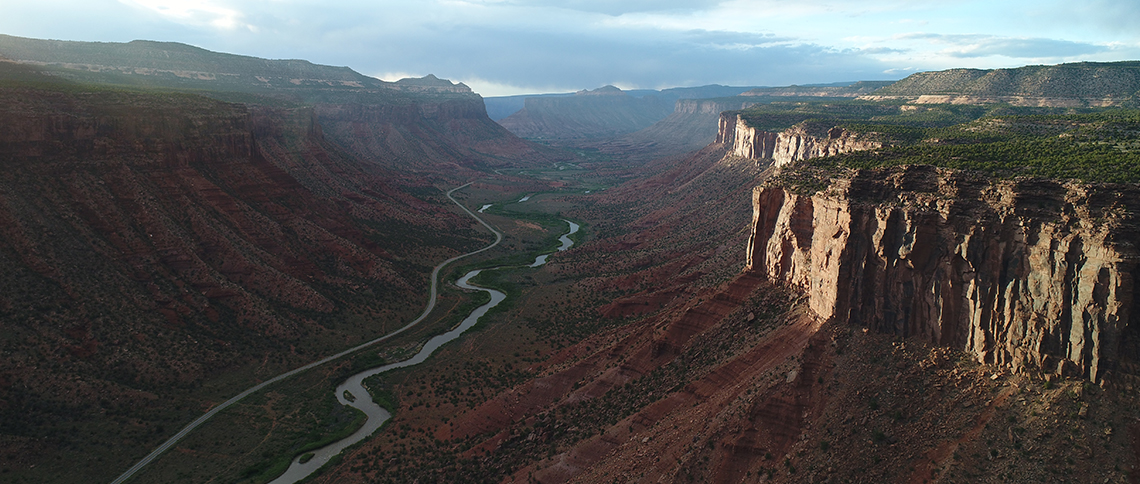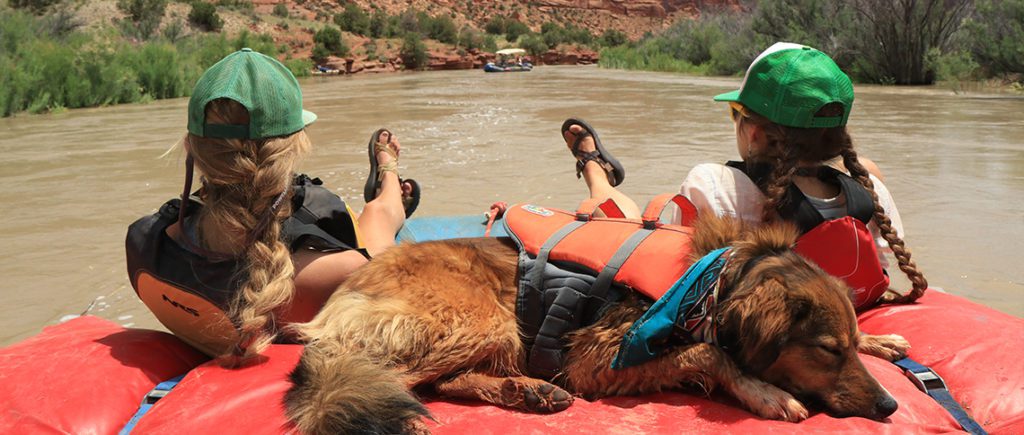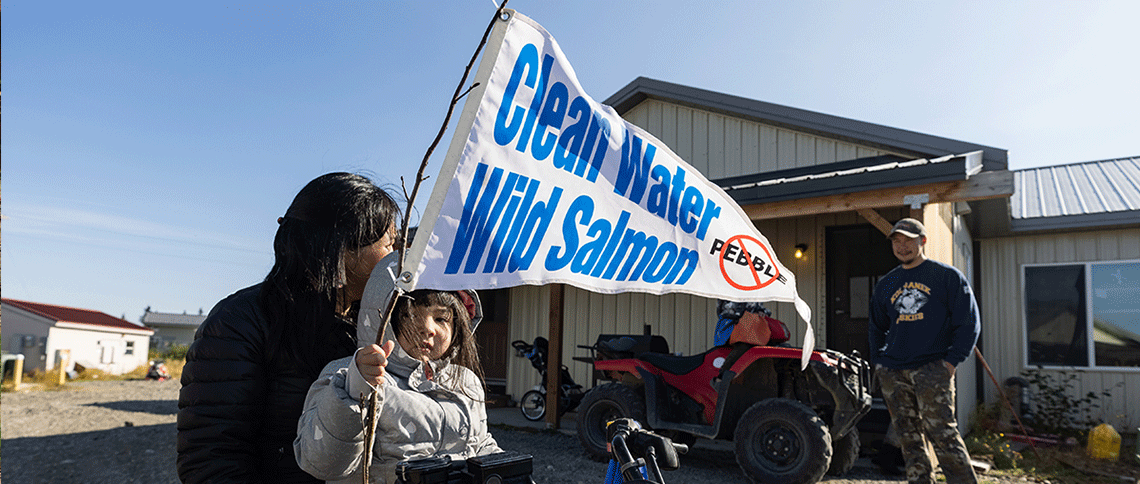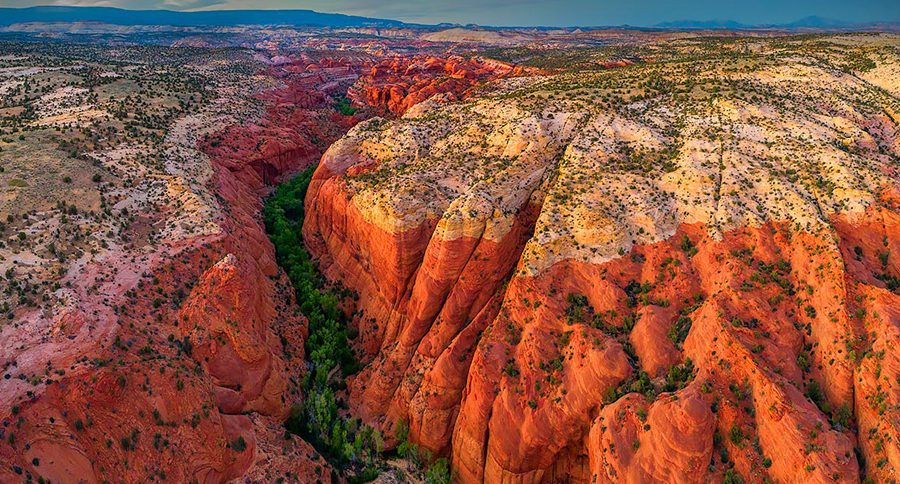History and Background of the Dolores River
The Dolores River emerges from the dramatic peaks of the San Juan Mountains in southwestern Colorado – flowing 241 miles west and then north before joining the Colorado River near Moab, Utah. Colorado’s landscape generally evokes images of snowy peaks and lush evergreen trees, but the landscape surrounding the Dolores River is redrock canyon country.
The latte-colored Dolores River winds through diverse ecosystems; transitioning from sheer, craggy mountains to iconic high-desert mesas. In the higher elevations the banks are lined with ponderosa pine forests in front of a backdrop of terracotta sandstone. Further downstream, cottonwood forests are scattered across historic floodplains. River currents ebb into remote, narrow winding canyons brushed with desert varnish; the river boasting both splashy whitewater and calm meandering currents.
The Dolores River is a special place – in fact, a recent poll showed 89% of Coloradans support landscape protections for the region. Similarly, administrative measures from the federal and state governments over the years also demonstrate the desire to protect the landscape. As far back as 1975, lengthy segments of the Dolores River were deemed suitable for inclusion into the national Wild and Scenic River system, though an official designation has never been made. Further, vast swaths of lands abutting the river are characterized as Wilderness Study Areas and Areas of Critical Environmental Concern by the Bureau of Land Management. Moving forward, these protections have the ability to be eroded and need to be strengthened.
Humans have connected with the Dolores River landscape for time immemorial – evidence of Fremont, Puebloan, Ute and other Indigenous cultures can be seen throughout the landscape. Lower in the watershed, petroglyphs and pictographs can be found in what may be interpreted as good areas to find water and near rich hunting grounds. The largest archeological effort undertaken by the federal government in history took place on the lands underneath the area McPhee Reservoir now permanently floods to salvage cultural artifacts before becoming inundated. The Anasazi Heritage Center outside of Dolores, Colorado holds these immaculate cultural artifacts. 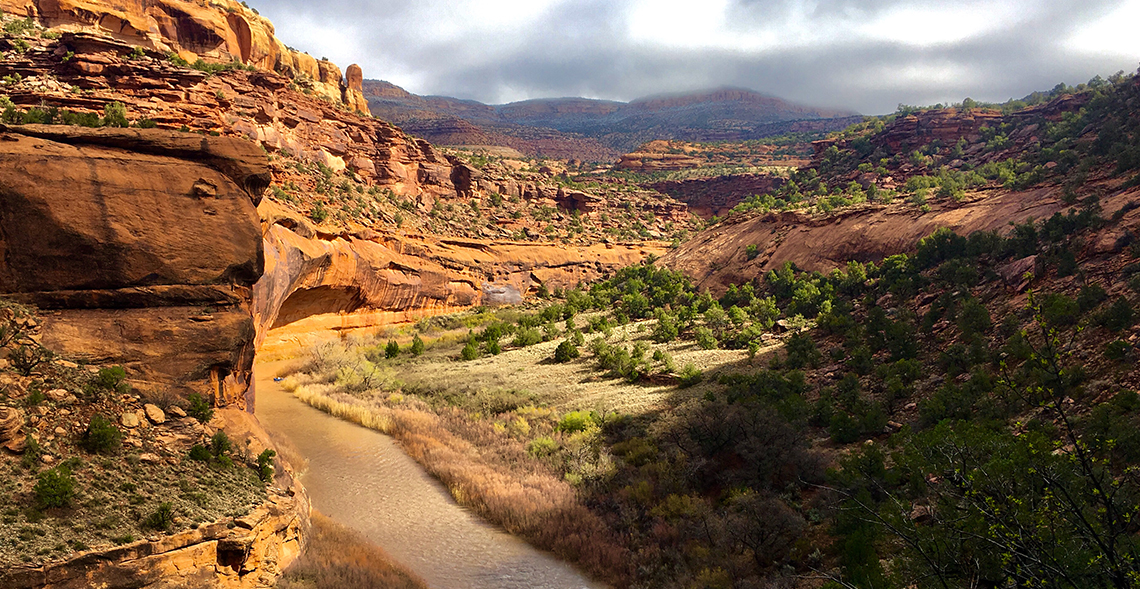
Spanish explorers, Domingiuez and Escalante, traveled the region across the Dolores River landscape in 1776 to try and find a route to California. The expedition ultimately failed, but left behind a legacy of landscape names: most notably the Dolores itself. Dolores translates to “Her Lady of Sorrow,” and was named during this expedition when they crossed the presumably nearly-empty river in late summer. The Spaniards’ interactions with both the Native people and landscape remain prominent in our culture even today.
In the mid-1900’s during the Manhattan Project and Cold War eras, the landscapes surrounding the Dolores River were mined for uranium and other minerals. From Slick Rock to the now-leveled town of Uravan that is a Superfund site, workers came in droves to mine uranium and vanadium from the rich geologic layers. The history of uranium is complex – countless people lost their lives early to lung ailments and cancers, yet the industry simultaneously propped up small rural communities.
In the 1980’s the Dolores Project was built in Dolores, Colorado. McPhee Dam and Reservoir provide irrigation in the adjacent San Juan River basin, and support multiple small communities, including Cortez, Dolores, Dove Creek and Towaoc on Ute Mountain Ute lands. The significant water diversions have also notably altered the hydrology of the 172 downstream river miles to a more narrow and deep channel with a shrinking floodplain. Water supply is one of the greatest challenges associated with the Dolores River – more water is allocated than exists most years.
Flows in the Dolores River are historically widely variable, even before the dam, and are becoming more so as climate change intensifies and temperatures rise. River flows from the Dolores into the Colorado River range from 72,897 acre-feet to 793,000 acre-feet annually (an acre-foot is roughly a football field covered in one foot of water). The majority of the water comes from snowpack, and runoff generally occurs in the spring months of May and June. In the late summer and winter, the river dips to its lowest levels.
As a hydrologic refuge in the high desert, the Dolores is home to countless plant and animal species. Elk, deer, and desert bighorn sheep share the rocky canyons with mountain lions and black bears, who munch on three-leaf sumac berries in the late summer. Rare and unique plant species line the banks of the river, New Mexico privet and a variety of native forbs and grasses grow under old-growth cottonwood branches. Massive collaborative efforts by diverse partners play a role in fostering plant biodiversity by restoring the riverside area following the removal of invasive tamarisk, a tree that colonizes riparian areas and takes resources away from native species.
Ancient native fish also call the Dolores River home. Species include the bluehead sucker, flannelmouth sucker, and roundtail chub who are endemic to the Colorado River Basin. These tough warmwater fish are threatened by low flows from water development, warm summer temperature, and invasive fish – primarily smallmouth bass who prey on young fish.
The Dolores River is also an up-and-coming recreation destination. When flows allow, the river has been called one of the best river trips in the Country because of breathtaking views, wildness, whitewater, length, and diverse access. In years when enough water is released from McPhee Reservoir, boaters flock from across the country to raft stretches of the lower Dolores. Other forms of land-based activities such as climbing, fishing, hunting, biking and hiking are also popular across the Dolores River landscape. However, the unique values that span the millions of acres around the Dolores River face innumerable threats. 
Threats to the Dolores River Corridor
All landscapes face unique threats, and the Dolores River is no exception. Perhaps most urgent, is the impacts climate change is having on the region. Long-term drought and parched, sunbaked soils are urgently reducing the amount of snowpack and subsequent runoff into the river. Further, monsoon rains in the late summer and early fall are becoming less frequent and predictable, meaning soils are soaking up more water when moisture does fall as rain or snow, leaving less to flow into the reservoir or river. As is the case throughout the west, the risk of mega-wildfires is also increasing.
While warming temperatures impacting snowpack are happening throughout the west, the southern portion of the Colorado River Basin in the San Juan Mountains is seeing more dramatic reductions in snowpack than the northern sub-basins. For example, a study found the Dolores Basin has seen a 21% reduction in flows in the past 20 years, whereas the more northern Yampa Basin has only seen a 6% decline in the same time period.
Climate change is compounding the negative impacts McPhee Dam and Reservoir has on the river. Over 75% of the flows are diverted for irrigation in the adjacent San Juan River Basin, meaning that no return flows come back into the Dolores watershed. The dam has severely changed the flow regime, or the timing, magnitude, and duration of flows below the dam. Low flows have negatively impacted both native fish as well as the trout fishery. Water rights are a major barrier to finding flexible solutions to this problem, and farmers and local communities are also negatively impacted by the impacts of long-term drought and a decreasing water supply.
Increasing recreation, especially motorized recreation, is also a threat to the landscape. Soil and vegetation, wildlife, and sensitive cultural sites are subject to increased pressures from rising visitation. Currently, the limited areas with administrative protection (Wilderness Study Areas and Areas of Critical Environmental Concern) are not widespread or strong enough to ensure long-term protection. Without additional conservation and increased management resources for federal agencies charged with multi-use management, these iconic lands could be loved to death.
Further threats to the lands around the Dolores River include development by extractive industries. Uranium and oil and gas development are both present in the watershed, though there is a potential for both activities to increase. Given complex global markets and international dynamics, the price of uranium is rising, which may bring attention towards this region once again. Uranium has an unfathomably long-lifespan in the ground and in water tables, and creates toxic waste that often harms vulnerable populations and the land where it is extracted and the waste stored.
History of Grassroots Engagement:
Stakeholders have been coming to the table for over two decades to find solutions to protect this sublime river and landscape. In 2004, a collaborative group called the Dolores River Dialogue (DRD) representing a variety of interests came together after a few attempts by conservation-minded groups failed to gain consensus. The DRD’s purpose was to “explore management opportunities, build support for and take action to improve the ecological conditions downstream of McPhee Reservoir, while honoring water rights, protecting agricultural, industrial and municipal water supplies, and the continued enjoyment of rafting and fishing.”
As the number of stakeholders grew by 2008, the collaborative effort morphed into a group called the Lower Dolores Plan Working Group. The purpose of this group was originally to provide management suggestions to the Bureau of Land Management (BLM) who was updating the Dolores River Corridor Management Plan. Eventually, the group decided to work together to explore alternatives to Wild and Scenic suitability and potential designation that could still ensure protection of resources. The focus of this group was primarily on the 119 miles of the Dolores River below McPhee Reservoir and above the confluence with the San Miguel, the largest tributary to the Dolores.
Since then, the group came to consensus that a National Conservation Area (NCA) designation was a tool that diverse interests could support . A legislative subcommittee was created to help develop the scope of the proposal. An additional outgrowth of the discussion was the creation of another collaborative group called the Native Fish Monitoring and Recommendation Team (M&R Team). The goal of this group is to provide management recommendations to support the native fish in the Dolores River below McPhee Dam: the flannelmouth sucker, roundtail chub, and bluehead sucker.
The northern portion of the Dolores River landscape also has a history of stakeholder engagement regarding landscape protections. In 2010, Mesa County commissioners, seeking to identify the best management tools available to the BLM to protect the residents of Gateway and the community’s rich culture, asked researchers at Colorado Mesa University’s Natural Resource and Land Policy Institute (NRLPI) to explore the community’s interest in asking Congress to create a National Conservation Area (NCA). To assist with this effort the owner of Gateway Canyons Resort, agreed to finance the study.
Stakeholder discussions and meetings occurred until 2012, when ultimately it was decided that an NCA was not the right approach at the time. Despite the inability to arrive at consensus on the NCA designation for public lands in the Gateway community, the discussion was fruitful in helping to define what ideas enjoyed broad, general support and what ideas created disagreement between participating stakeholders.
It is clear that long-term protections for the Dolores landscape are essential and also publicly supported. The NCA legislation discussed below represents long-term consensus and would begin to provide protections for the river corridor. However, the greater landscape is much larger than the proposed NCA area and further work may need to be done in future. Protections would benefit local communities, preserve core habitats and biodiversity, and significantly support the national 30×30 initiative. 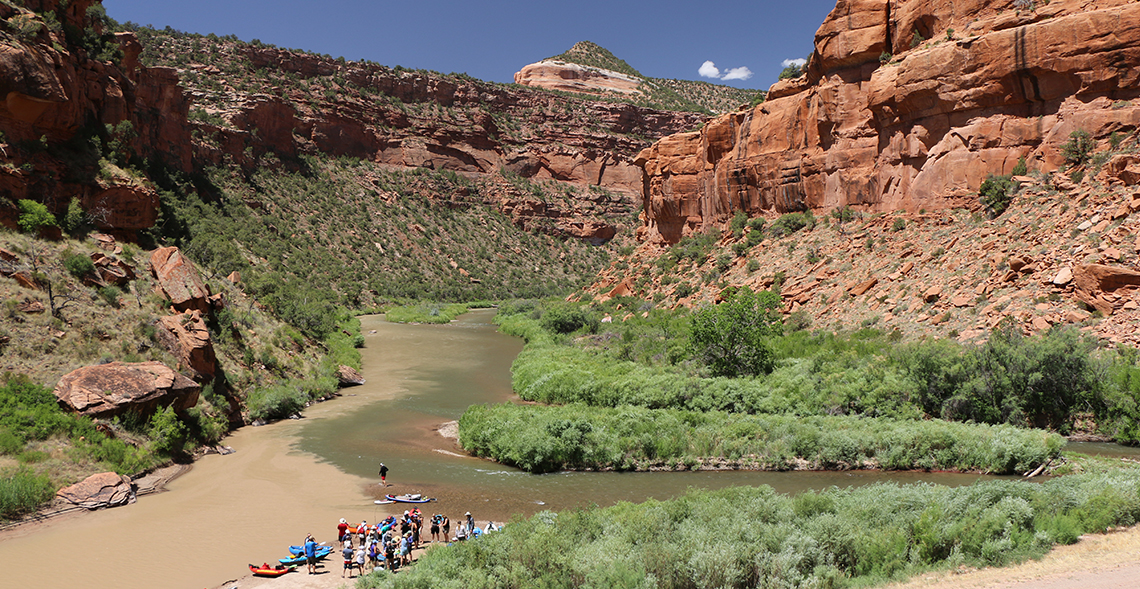
What will the NCA in the southern region do?
As the Dolores River Canyon National Conservation Area (NCA) proposal reaches over ten years of negotiations, Senator Bennett has agreed to spearhead the effort in the Senate. The Dolores River Boating Advocates and the rest of the Legislative Subcommittee are thrilled to see this effort move into this public stage.
The process has morphed over the years to accommodate a wide variety of desires from stakeholders to develop an alternative to Wild and Scenic suitability and potential designation. The legislation as it is drafted now currently includes 75,000 acres along over 70 miles of the river corridor in San Miguel and Dolores Counties and ensures protection of identified Outstandingly Remarkable Values (ORV’s), such as scenic beauty, geology, ecology, native fish, whitewater rafting, and cultural resources. New designations would include:Establishment of a new NCA on BLM lands in San Miguel and Dolores Counties;Establishment of a Special Management Area on USFS lands adjacent to the NCA;And designation of the Ponderosa Gorge Roadless Area.
Many other additional management prescriptions are also included in the language of the NCA proposal. These restrictions include no new roads, with the exception of private property access and public safety; no new mining claims or oil and gas leases would be allowed in the river corridor; and no new dams or impoundments would be allowed within the NCA/WSA boundary or projects outside the boundary that would have a deleterious effect on the river corridor.
Importantly, the NCA would refer to the Native Fish Monitoring and Recommendation Team specifically in the legislation as a mechanism to provide meaningful consultation with recreation interests and fish and wildlife managers. Consultation is happening informally now, but formalizing this mechanism in legislation is important for longevity and ensures continued collaboration between water managers and other stakeholders.
It is also important to realize what this NCA does not address. The legislation protects and respects private property and water rights and the use of the Dolores Project and its allocations. In other words, this bill does not impact river flows and water rights. Additionally, grazing in the NCA and WSA will continue as currently managed under Management Plans and other regulations.
It is likely that at least one of the other counties in the southern region will rejoin the effort when the legislation is introduced.
How you can help!
- Encourage Senator Bennet to introduce the NCA legislation and protect the Dolores River landscape. Also help spread the word to your friends and family.
- If you visit the Dolores River landscape, practice Leave No Trace principles, and stay on designated trails and roads.
- Enjoy cultural sites from a distance, and do not touch rock art panels.
- Do not harass wildlife – this area is their home and you are a visitor.
The Dolores River is an iconic and important feature in an arid environment, shaping both the physical and human environment, and it is important to be a good steward and support long-term protections for future generations.